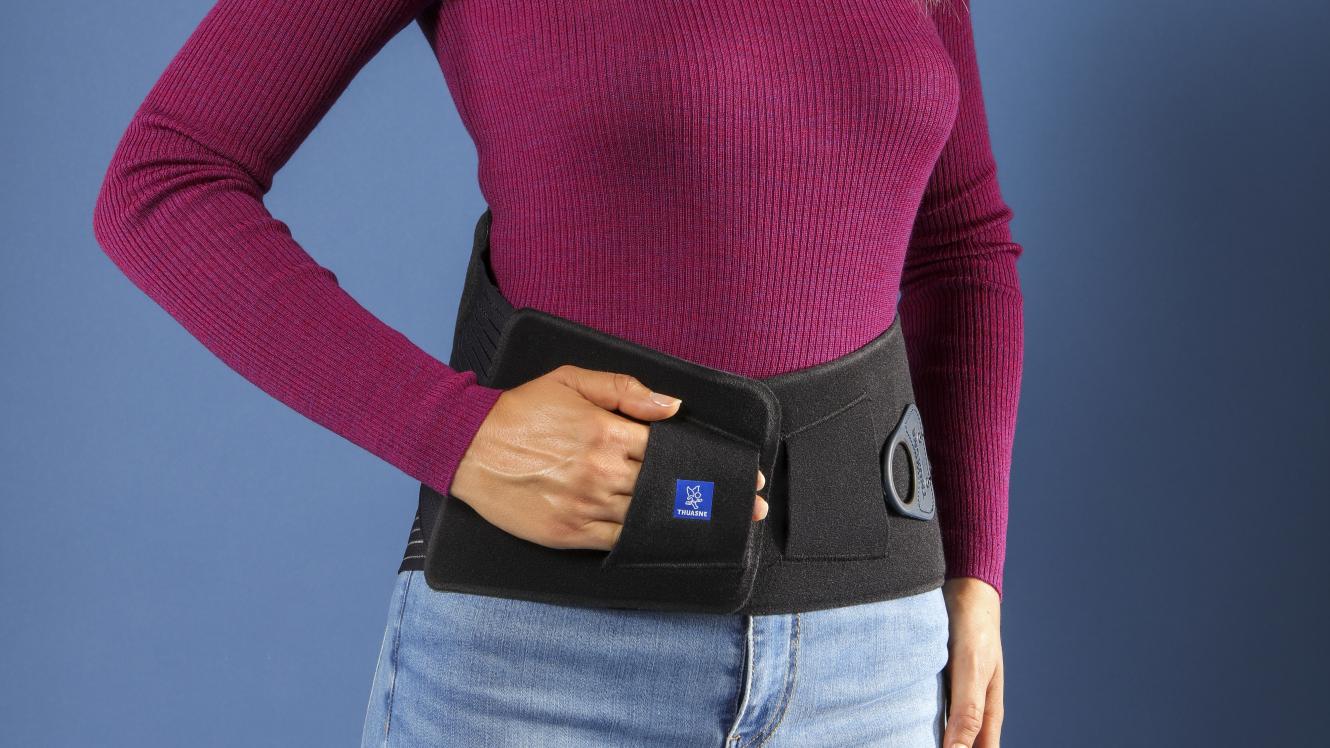Low back pain
Pain in the lumbar spine, or low back pain, is very common: 60 to 90% of the adult population have already suffered from it! Contrary to popular belief, prolonged rest is not a treatment and can even result in the condition becoming chronic.

The lumbar spine is made up of 5 mobile vertebrae, with a backward curvature - or lordosis - between the last vertebra of the thoracic (or dorsal) spine and the first of the 5 vertebrae (fused together in their case) of the sacrum. It is very frequently the site of “non-specific” pain, in other words pain that is not caused by an inflammatory condition, injury, tumour or infection (90% of cases). 14.5 million cases of non-specific low back pain are diagnosed every year1 ! People between the ages of 55 and 65 are most affected.
But not all low back pain is the same! It can:
- develop gradually over a period of months or suddenly after moving awkwardly;
- be accompanied or otherwise by a disc herniation (“slipped disc”);
- be acute (of short duration, lasting less than 6 weeks), subacute (lasting 6 to 12 weeks) or chronic (persisting for more than three months, sometimes for years).
Lumbago and sciatica, two common types of acute low back pain
Lumbago is manifested by restricted movement accompanied by acute pain in the base of the back and possibly the leg, without descending below the bottom of the buttock. It generally appears following unusual exertion and is accompanied by marked difficulty moving. Lumbago gets better on its own within a week or two, but recurrent episodes are possible.
Sciatica results in intense pain in the base of the back, extending right down the leg to the toes. In 95% of cases, it is caused by irritation of one of the sciatic nerve roots by a herniated disc. It often occurs in people with a history of low back pain and following a physical exertion, even moderate. It generally gets better on its own: 80% of people are better after two months and 95% after 1 year.
The treatment of lumbago and sciatica includes painkilling medication and anti-inflammatories, relative rest (bedrest should preferably be avoided and should be for as short a period as possible) and the continuation of activities not prevented by the pain. Moving is one of the main pillars of treatment. Wearing a lumbar belt helps speed up the reduction of pain and recovery of mobility without any negative effects on the muscles, contrary to popular belief2 3. Surgery is rarely necessary.
When the pain persists…
Chronic low back pain can develop following lumbago or develop gradually with no particular cause. Mainly related to phenomena of wear and ear and micro-trauma, it can be promoted by posture problems, muscle weakness and stress. Treatment includes painkilling medications, physiotherapy with targeted exercises as well as regular physical activity, which both reduce pain and improve functional capacities4.